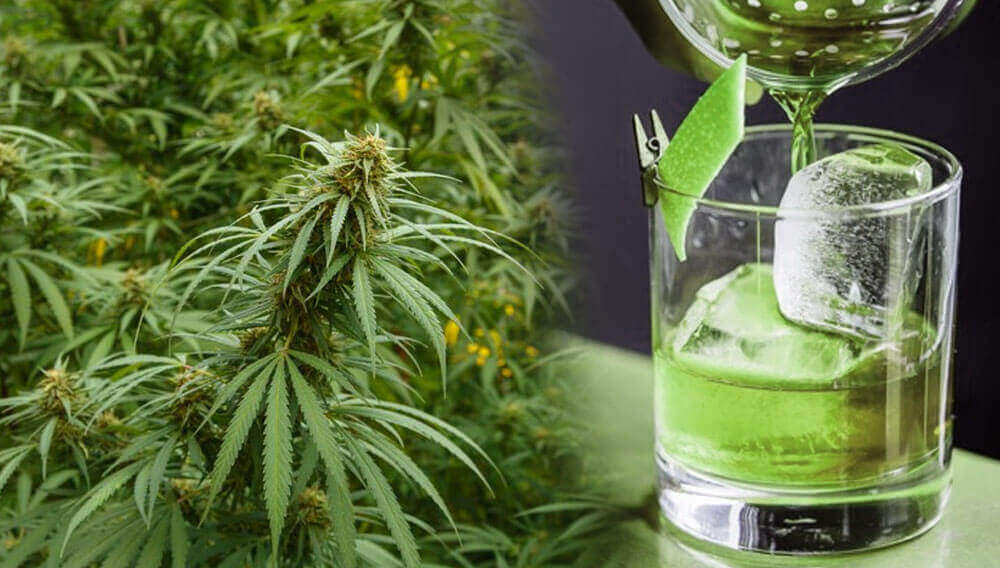Professional and retired mainstream athletes are already using forms of cannabis and cannabidiol (CBD) for acute and long-term pain management. So are extreme athletes, who are known to have high rates of impact injuries, ready for some alternative medicine too?
According to a recent study in the Orthopaedic Journal of Sports Medicine, the four extreme sports with the highest incidences of head and neck injuries are skateboarding, snowboarding, skiing and motocross. The study also showed that snowboarders face the highest risk of concussion, with a risk per hour of riding that’s triple that of skiers.
Ex-NFL player Marvin Washington, who vapes and takes CBD tinctures as an anti-inflammatory, thinks it’s time for all athletes to step up and consider medical marijuana’s promising purposes, one of which might even help halt the opiate epidemic in America.
“There should be an athlete cannabis movement, as there is strength in numbers. Enough numbers and we will be able to change policy and make the four major leagues look at the whole cannabis plant as an alternative to opiates,” he told GrindTV in a statement.
“Concussions and opiates are the two biggest issues the NFL is facing concerning players’ health, and cannabis can help both.”
We’re not talking about smoking pot here, Dr. Bryan Doner, co-founder of Compassionate Certification Centers, told GrindTV. He’s hosting the upcoming World Medical Cannabis Conference & Expo in Pittsburgh to talk about marijuana’s various roles in treating not only chronic pain, but also head-trauma-related injuries and other medical conditions.
Medical marijuana can be inhaled in vapor form, eaten, taken as a tincture or applied to the body in oil form. Many applications include only CBD, not the plant’s THC component that gets you high. But sometimes that element helps too.
In fact, at least one study shows “sliding” sport (surfing, snowboarding, windsurfing, etc.) athletes already use cannabis in higher relative numbers for performance-related benefits.
For extreme athletes, the point of using medical rather than recreational marijuana is that you can control the dose and application for very specific purposes rather than just numbing with opiates, which also comes with serious side effects including its highly addictive properties.
“With medical marijuana we want to know and control the dosing. There are parameters so you know exactly what’s in it for safety and so we can be consistent and accurate,” Doner says.
For example, vaporized medical marijuana typically works much faster for acute pain versus a dose applied topically or ingested.
“It might take longer to receive therapeutic effects from the latter forms, but you could see benefits for a much longer period of time,” Doner says of their use for chronic pain.

Testing cannabis for concussion-related relief is still nascent, but Doner says that early animal models are revealing interesting information. When cannabinoids bind to certain brain receptors, they show both neuro-protective and -regenerative properties — indications that could positively impact the long-term effects of head trauma.
Using medical marijuana to avoid opiates altogether or get off of them from long-term-pain use is another promising application for medical marijuana in athletics.
The biggest problem is regulation. Medical and recreational marijuana is now legal in a majority of states, but it’s still considered a Schedule 1 drug by the federal government, which means the feds don’t view it as having any medical utility.
“Add in highly mandated athletic governing bodies like the NFL and the fact that athletes train in states where marijuana is legal but compete in places where it’s not, and it’s a huge conundrum,” Doner says.
“Players are saying, ‘I should be able to take this, but if I do, will I jeopardize my livelihood?’”
Extreme athletes, however, seem poised as an ideal test case. It’s a smaller industry than, say, football; restrictions, therefore, may be more open-ended, and there are many athletes riding the line between elite and professional.
“Extreme athletes are individuals that aren’t afraid to march to the beat of their own drum,” Doner says. “They’re not afraid to follow something they believe in, something they’re passionate about.”
When it comes to using marijuana for pain and performance, time will tell just how extreme these athletes really are.
(1189)





Leave A Reply